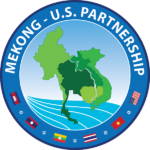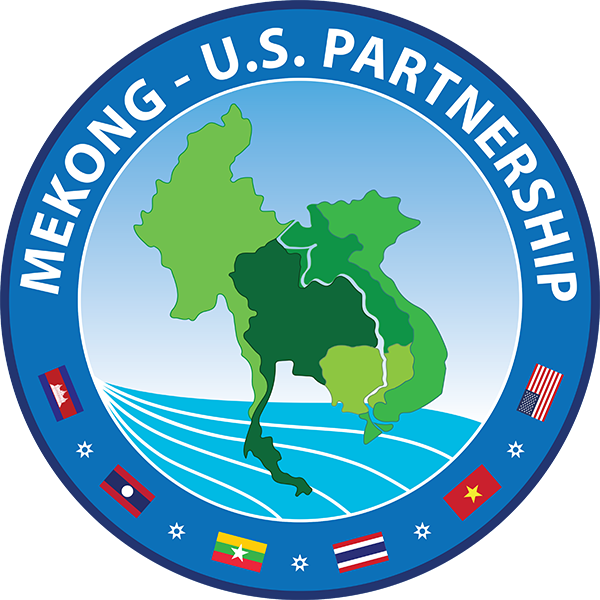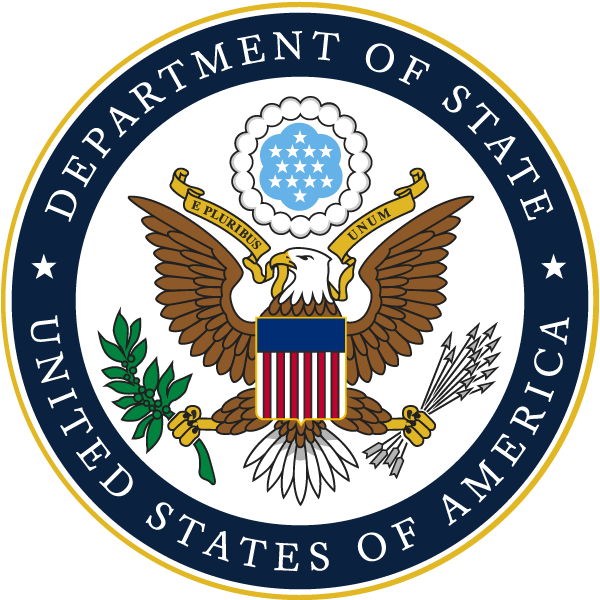
The Mekong-U.S. Partnership (MUSP) (hereafter referred to as “The Partnership”) promotes the stability, peace, prosperity, and sustainable development of the Mekong sub-region through cooperation between Mekong sub-region countries and the United States in addressing transboundary challenges. It further reinforces the strong and longstanding relationships among the United States, Cambodia, Lao PDR, Myanmar, Thailand, and Viet Nam.
The Partnership strengthens our cooperation and dialogue and expands collaboration on new challenges and opportunities. The Partnership, which complements the ASEAN-U.S. Comprehensive Strategic Partnership, supports the implementation of the ASEAN Community Vision 2025, the ASEAN Comprehensive Recovery Framework, and the ASEAN Outlook on the Indo-Pacific, which aims to safeguard and preserve ASEAN centrality and to maintain peace, security, and prosperity for people in Southeast Asia as well as in the Indo-Pacific region. In addition, the Partnership seeks to promote complementarity with the Ayeyawady-Chao Phraya-Mekong Economic Cooperation Strategy (ACMECS), the Mekong River Commission (MRC), and other Mekong cooperation mechanisms.
This Plan of Action is guided by the Partnership’s Foundational Document and Joint Ministerial Statement, which were approved by the Partners on September 11, 2020, at the first Partnership Ministerial meeting and by the Friends of the Mekong Policy Dialogue on January 12, 2021. The Plan outlines unique opportunities for U.S. engagement with Mekong sub-region communities, government decision makers, and international partners, including scientists, academia, development partners, and other stakeholders.
The United States and Mekong sub-region countries intend for the Partnership to serve as a platform for high-level cooperation on strategic challenges and policy-making in the Mekong sub-region on shared priorities between the United States and Mekong sub-region countries. By implementing this Plan of Action, Partners endeavor to strengthen transparency and good governance; enhance connectivity, economic integration, and inclusive and sustainable development; and help narrow the development gap in the region.
Areas of Cooperation:
The Partnership expands on more than 11 years of cooperation through the Lower Mekong Initiative (LMI) with a comprehensive approach to emerging challenges, including but not limited to: (1) economic connectivity; (2) sustainable water use and management, natural resources management, and environmental conservation and protection; (3) non-traditional security issues including food and energy security, trafficking in persons, trafficking in narcotics, wildlife and timber, health security, cybersecurity, online scam centers and other cyber-enabled crimes, and disaster response and preparedness; and (4) human resource development. This Plan of Action and the activities listed in its Annexes promote collaborative approaches to regional challenges and opportunities.
Partnership Activities:
Partners intend to cooperate through various means and mechanisms, and report progress at least annually. Partnership activities aim to promote peace, stability, and prosperity, promote respect for international law and understanding of member countries’ domestic laws and regulations, and support the achievement of the Sustainable Development Goals (SDGs). Activities should promote inclusive economic growth and sustainable development through connectivity; narrowing the development gap; digital economy and human resource development; transparent, rules-based approaches to addressing the region’s development challenges; regional integration; innovative capacity building; and strengthening friendship and partnership among the Mekong sub-region countries and the United States. Activities should also assist Partners to address shared and emerging challenges, such as transnational crime, natural disasters, and health security, and promote climate change adaptation and mitigation, water-food-energy security, and effective sustainable natural resource management, including in fisheries resources.
Information Sharing on Partnership Activities:
All partners are expected to share updates on all of the activities under this Plan of Action, as appropriate, openly and transparently through Policy Dialogues and Senior Officials Meetings (SOM). All partners are expected to update the Annexes to this Plan of Action on an annual basis at the Policy Dialogue.
Friends of the Mekong:
The Partnership is intended to compliment the work of the Friends of the Mekong (FOM), in whichMekong countries, the United States, Australia, the European Union, India (invited), Japan, New Zealand, the Republic of Korea, the Asian Development Bank, the Mekong River Commission Secretariat, and the World Bank coordinate their priorities for the development of the Mekong sub-region. The Partnership acknowledges that the FOM are committed to principles and values shared by the Mekong-U.S. Partnership, including values that have underpinned peace and prosperity across the Indo-Pacific region for decades, and the principles of transparency, inclusivity, good governance, ASEAN centrality, multilateralism, international cooperation and the UN and international system, respect for international lawand a rules-based framework architecture, and complementarity with existing cooperation frameworks. The United States serves as a chair of the FOM.
Structure and Schedule of Meetings:
MUSP meetings are generally co-chaired by the United States and one of the five Mekong Partners, rotating automatically annually in alphabetical order. MUSP meetings may be scheduled together with Friends of the Mekong (FOM) meetings or individually. The Mekong country co-chair of the MUSP may provide assistance, where possible, to the United States to organize FOM engagements. Any issues concerning timing and location of meetings, hosting responsibilities, representation, or co-chairmanship are expected to be resolved through dialogue and consultation among the Partners.
Policy Dialogue:
Held at the level of Deputy Director General or Head of the Unit responsible for the MUSP, this meeting is intended as an exchange of views on shared annual priorities for the Partnership, to provide an annual update on progress of Partnership activities and to inform Senior Officials. Additional working-level meetings may be held, as necessary, to coordinate responses to and projects addressing specific regional challenges identified by the Partners.
Senior Officials’ Meetings (SOM):
MUSP Senior Officials’ Meeting are expected to be held concurrent with ASEAN SOM meetings or when otherwise appropriate. Senior officials are expected to exchange views on shared priorities in the sub-region and prepare for the MUSP Ministerial Meetings.
Ministerial Meeting:
Held concurrently with ASEAN and the related series of Foreign Ministers’ Meetings or when otherwise appropriate with mutual consent, the Ministerial Meetings are generally intended to be the premier annual diplomatic engagement of the Partnership and the Friends of the Mekong.
Leaders’ Meeting:
By decision of all Partners, the leaders’ meeting may be scheduled with the ASEAN-U.S. Summit or when otherwise appropriate.
 Mekong - U.S. Partnership
Mekong - U.S. Partnership


